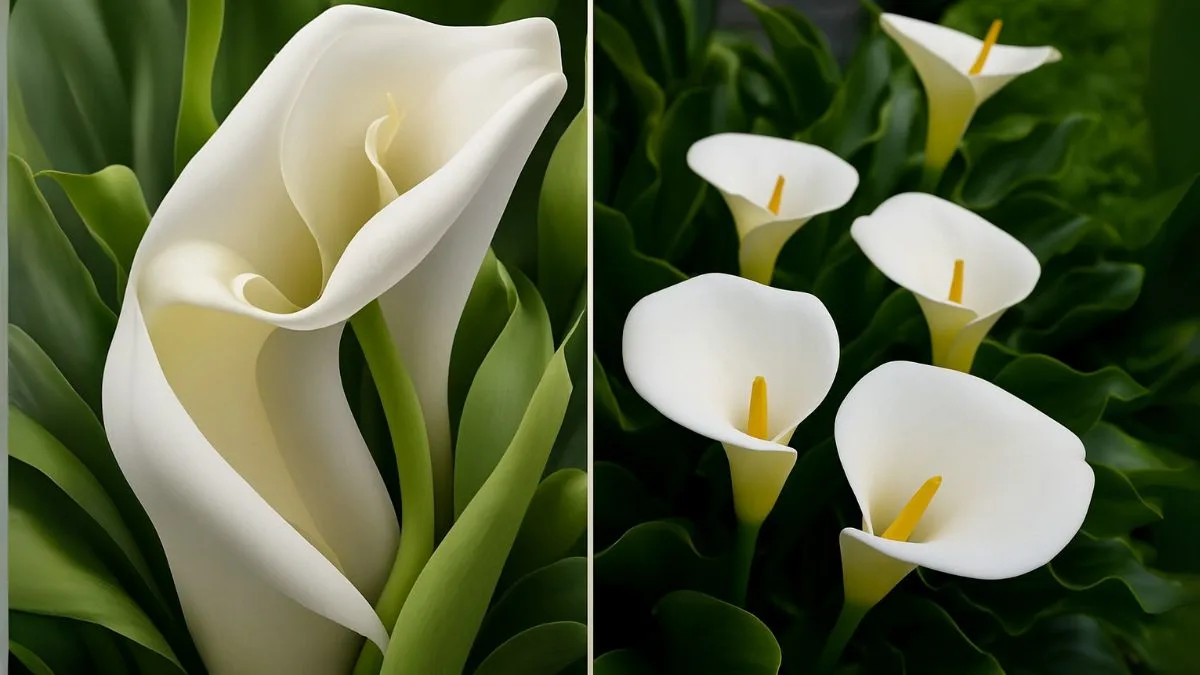Few flowers capture hearts the way the Calla lily does. Its striking trumpet-shaped bloom makes it a favorite in weddings, bouquets, and gardens. But beyond its elegance lies a tapestry of stories that date back to ancient civilizations. Calla lilies are said to come from the ancient goddess Hera, carrying both mythological and cultural significance that continues to enchant people even today.
The Fascinating Origin of the Calla Lily

- Ties to Greek Mythology: The Calla lily has a fascinating origin, as indicated by Greek mythology. Legend tells us that Calla lilies are said to come from the ancient god Hera, wife of Zeus. According to myth, when drops of her milk fell to the ground, they gave birth to the first Calla lilies. The radiant white petals were seen as a symbol of her divine power and purity.
- Symbolism of Magnificent Beauty: Because of this myth, Calla lily symbolizes magnificent beauty, often tied to the gods and their divine creations. The flower came to represent not just elegance, but also rebirth and holiness.
Calla Lilies Through History
- From Ancient to Modern Symbolism: Over time, Calla lilies have a storied history across cultures. In Roman times, they were linked to lust and sexuality, partly due to their unique shape. During the Victorian era, they represented purity and innocence, making them a common feature in Christian art. In modern times, they are cherished worldwide as symbols of sophistication. In fact, in both Canada and the USA, they remain among the most popular wedding flowers.
- Not True Lilies: Despite their name, they are in a whole different family called Araceae. Unlike true lilies, Calla lilies – also called Zantedeschia – belong to a genus native to southern Africa. Their resilience and striking beauty have made them a favorite ornamental plant across the globe.
Also Read: Song of India: The Low-Maintenance Plant That Looks Like a Designer Accent
The Duality of Calla Lily Myths
- Stories of Hera: Many tales emphasize how Calla lilies were associated with the goddess Hera, reinforcing the belief that they were divine gifts. However, not all myths are flattering. Some stories describe Zeus creating them without Hera’s consent, highlighting tension within mythology.
- Cultural Interpretations: In some cultures, the flower is seen as a sign of death and mourning, often used in funerals. In others, it represents rebirth and renewal, commonly used in weddings and religious ceremonies. This duality adds to its mystique, making it one of the most symbolic flowers in history.
Modern Uses and Symbolism
- Weddings and Celebrations: Calla lilies remain a staple in weddings, often symbolizing marital bliss and new beginnings. Their long stems and bold blossoms add elegance to bouquets, centerpieces, and garden landscapes.
- Religious and Spiritual Significance
- Because Calla lilies are said to come from the ancient goddess Her(a), they carry spiritual meaning in Christian symbolism too, often representing purity and resurrection.
Symbolism of Calla Lilies
Symbolism |
Cultural Meaning |
Magnificent Beauty |
Greek mythology tied to Hera |
Purity & Holiness |
Victorian and Christian symbolism |
Lust & Fertility |
Ancient Roman associations |
Death & Mourning |
Funerals and remembrance |
Rebirth & Renewal |
Weddings and celebrations |
Personal Reflection
When I first encountered Calla lilies in a wedding bouquet, I was captivated by their bold simplicity. Later, while researching their myths, I was amazed at how Calla lilies have a storied history—ranging from the goddess Hera to Victorian art. It made me appreciate them not just as flowers, but as storytellers of culture and history.
Also Read: Epiphytic Plants: 10 Surprising Species That Don’t Grow in Soil
Growing Calla Lilies Today
Even though the history and myths are intriguing, gardeners love them because they’re relatively easy to grow. Calla lilies – also called Zantedeschia – thrive in moist, well-draining soil with partial to full sunlight. They make stunning additions to gardens in Canada, the USA, and worldwide.
The Calla lily is more than a flower—it is a piece of myth, history, and cultural heritage. From the belief that Calla lilies were associated with the goddess Hera to the way Calla lily symbolizes magnificent beauty, this plant has enchanted civilizations for centuries. Though they are in a whole different family called Araceae, their elegance and symbolism make them timeless.
Whether admired in gardens, weddings, or myths, Calla lilies have a storied history that continues to bloom across the world.






